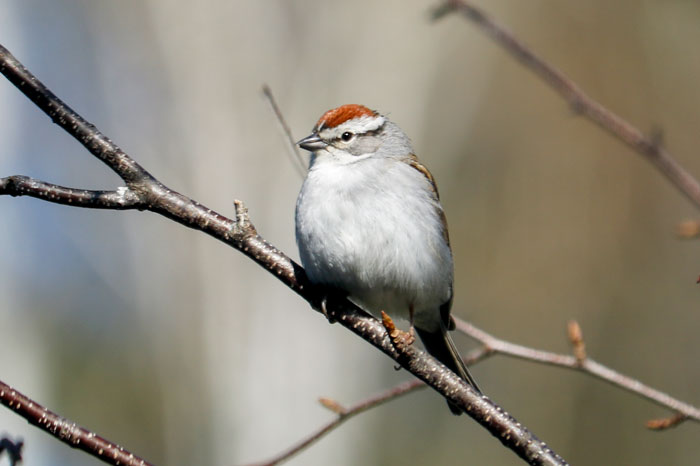
Chipping sparrows Spizella passerina are American sparrows and passerine birds in the family Passerellidae. There are two subspecies found here in North America, the eastern chipping sparrow, and the western chipping sparrow. These birds are quite common and are frequently seen at feeders.
The chipping sparrows are back here in Maine and currently, I have four of these small and energetic birds frequenting my yard. I’ve enjoyed observing them daily at my feeders and hearing their loud calls from high perches in the trees above.
Even though chipping sparrows are fairly easy to identify, they can often be confused with other sparrows. No worries though, I will share some interesting facts and information to help you identify these birds for yourself.
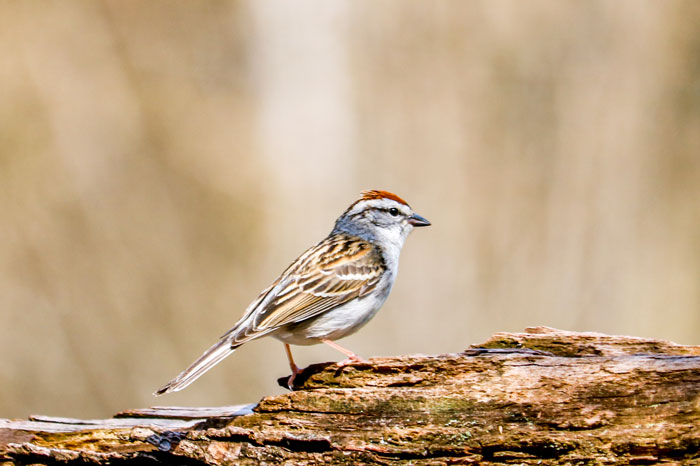
Chipping Sparrow Identification
Chipping sparrows are slender birds with fairly long tails and medium-sized bills. During the summer, these sparrows have a clean and crisp appearance. They have whitish-colored underparts, a pale face, and a black line through the eye. Their most distinguishable feature is their pretty and bright rufous cap. In the winter months, their bright colors are rather subdued. They are brownish with darkly streaked underparts. The black line through the eye is still present, but the cap becomes a light reddish-brown color.
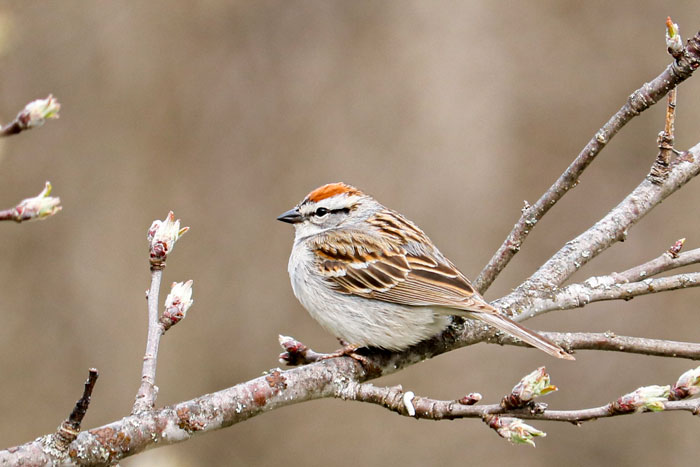
Chipping Sparrow Behavior
You will notice that chipping sparrows forage mostly on the ground in flocks, under the cover of shrubs and low trees. They will also make short flights to catch insects in mid-air. While singing, they cling to the outer limbs and tops of small trees.
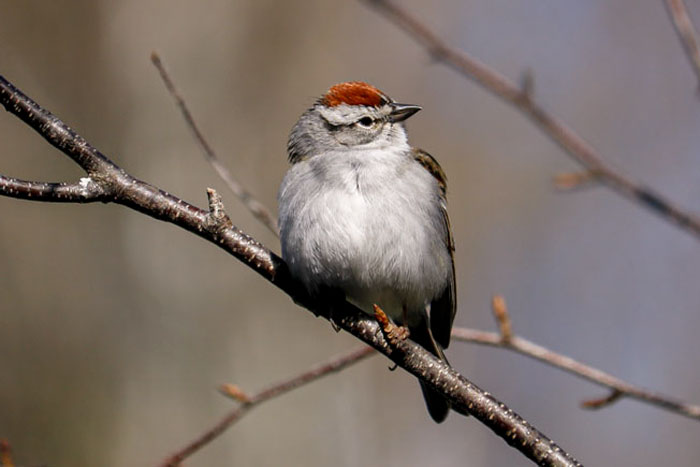
Chipping Sparrow Habitat
Chipping Sparrows can be found in open woodlands and forests with grassy clearings across the United States. They are frequently observed in parks, along roadsides, and yards with trees, and you will especially be able to enjoy these birds if you provide them with feeders.
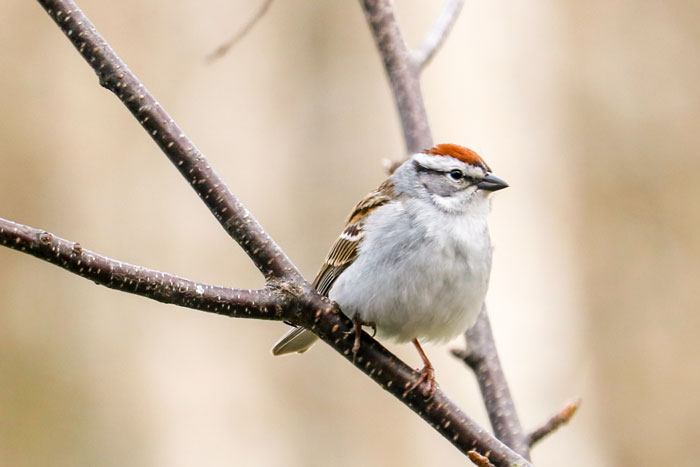
Chipping Sparrow Diet
The diet of the chipping sparrow includes a variety of mostly insects and seeds, that will vary with seasons. During the summer, they will feed on mostly insects that include beetles, caterpillars, and grasshoppers, and sometimes they will eat spiders. In the fall and winter months, they will feed on seeds, grasses, weeds as well as waste grain.
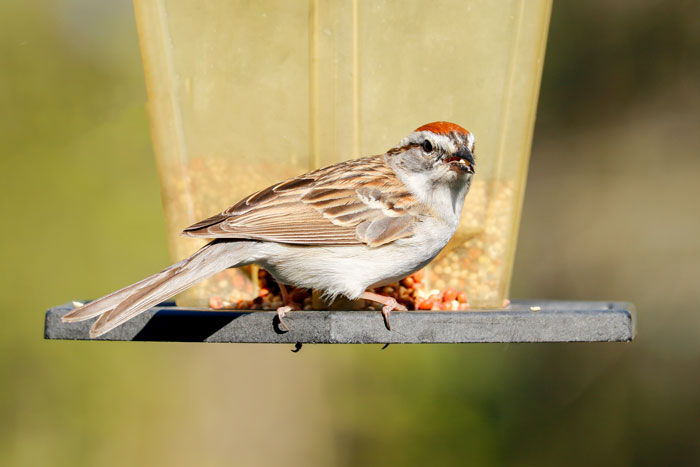
Chipping Sparrow Song
The song of the chipping sparrow is one of the most common bird sounds you will hear in the woods. Their song is a long, evenly spaced chipping rattle. Songs can last for about 3.6 seconds, consisting of around fifty-five nearly identical chip notes in a row. Both sexes of chipping sparrow use a single chip note to stay in contact with each other year-round. When there is danger, they give a long zeeeee call. During courtship, females make a soft and rapid see-see-see-see in order to attract a mate.
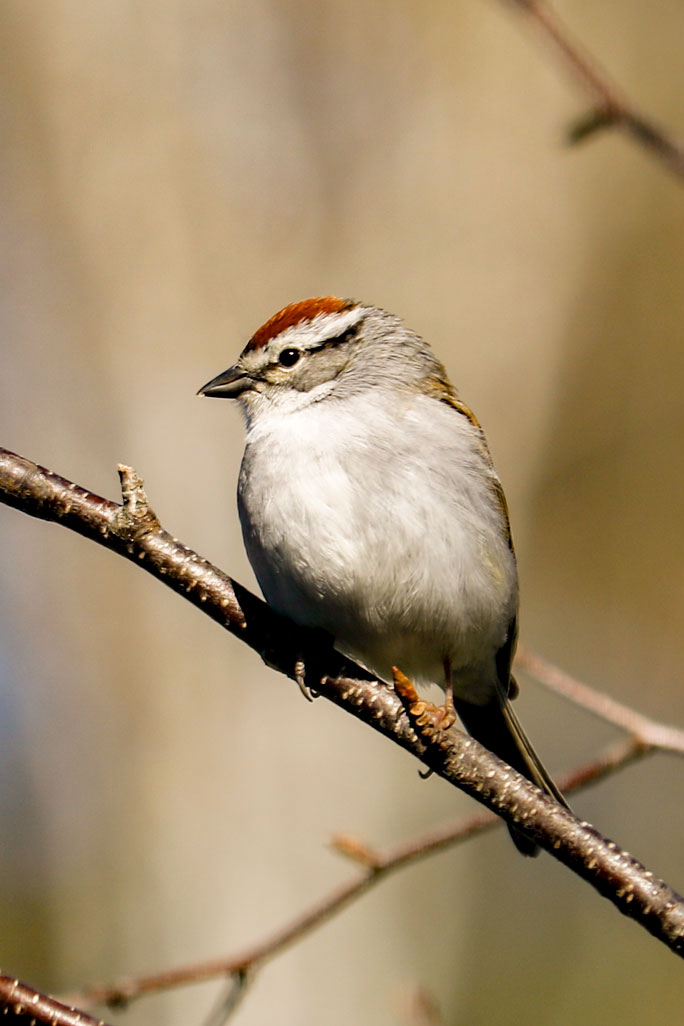
Chipping Sparrow Nesting
A few males will choose more than one mate and nesting sites will vary. Chipping sparrows will usually make their nests in conifers, but will also nest in deciduous trees or sometimes on the ground. Nests are built by females. The nest is constructed of grass, weeds, and rootlets, lined with fine grass and animal fur into a compact open cup.
There are three to four, rarely two to five pale blue-green eggs. The eggs also have brown, purple markings, with black mostly at the larger end. The females incubate them for about eleven to fourteen days. During this time, males may feed the female. Both parents will feed the nestlings. The young leave the nest about eight to twelve days after hatching. Chipping sparrows have two broods per year.
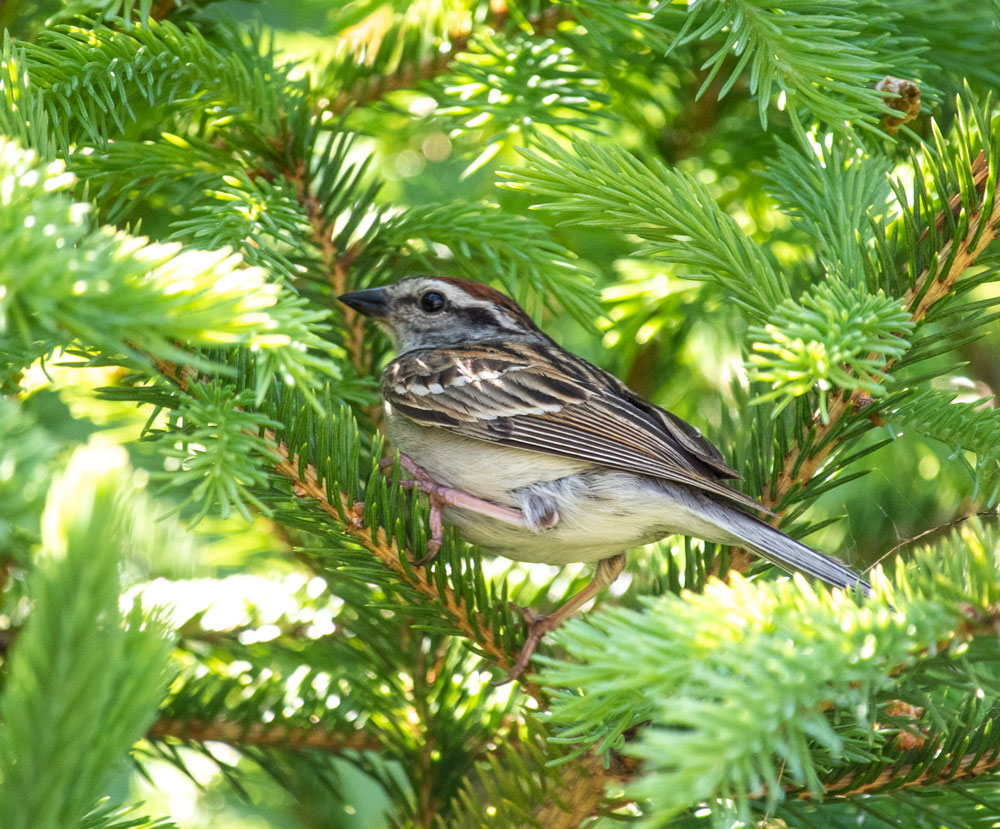
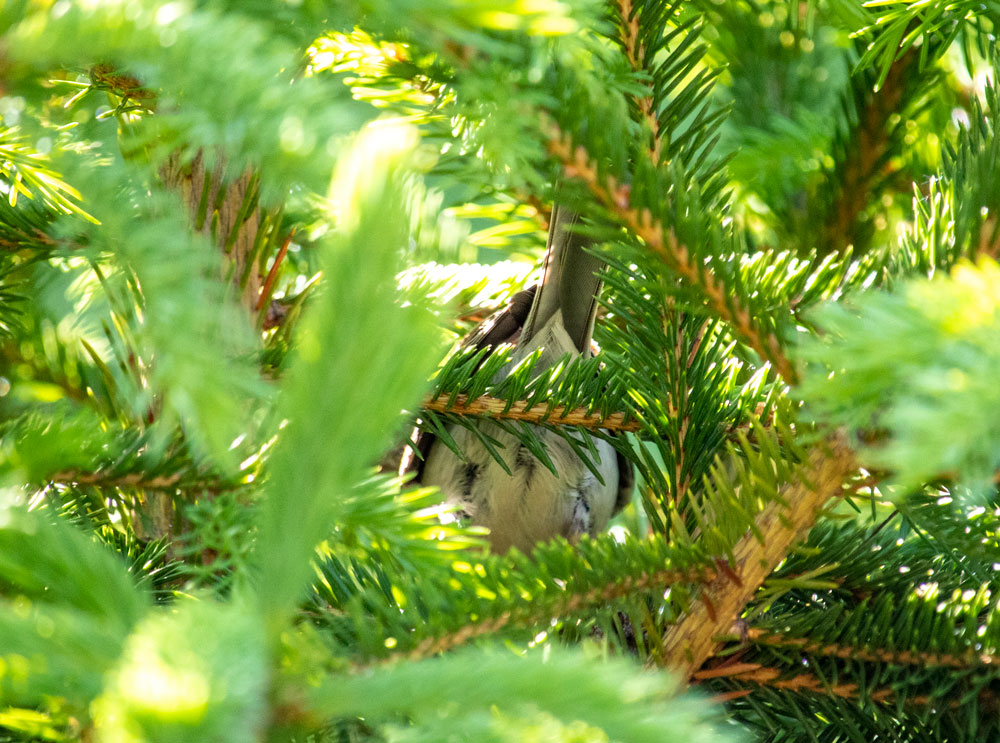
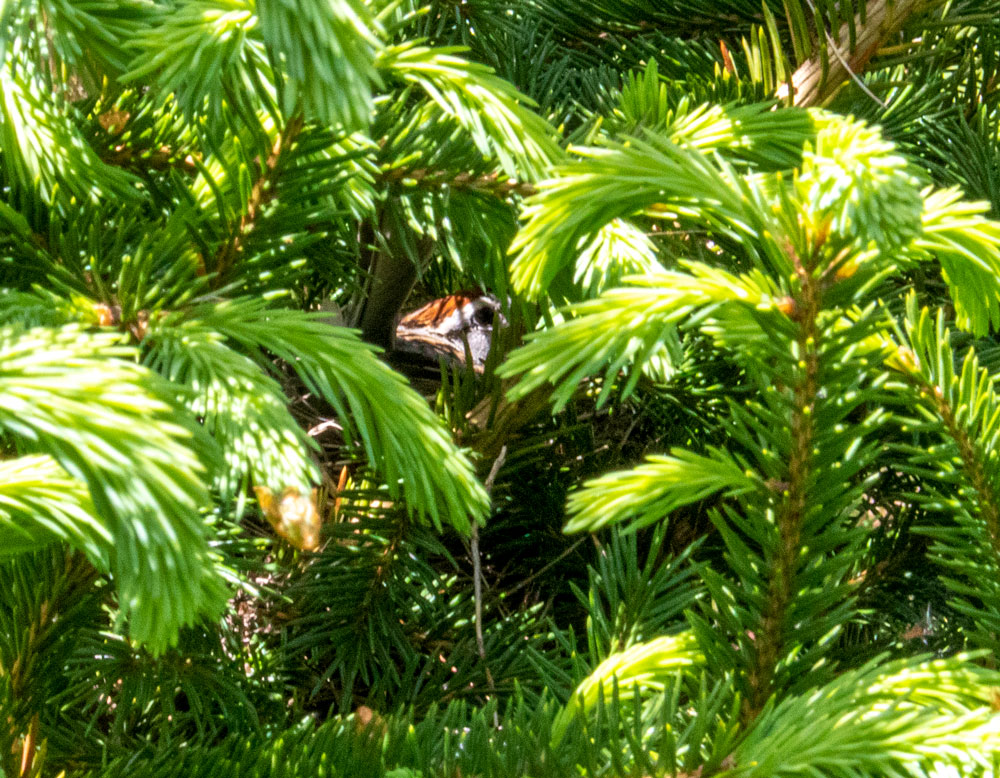
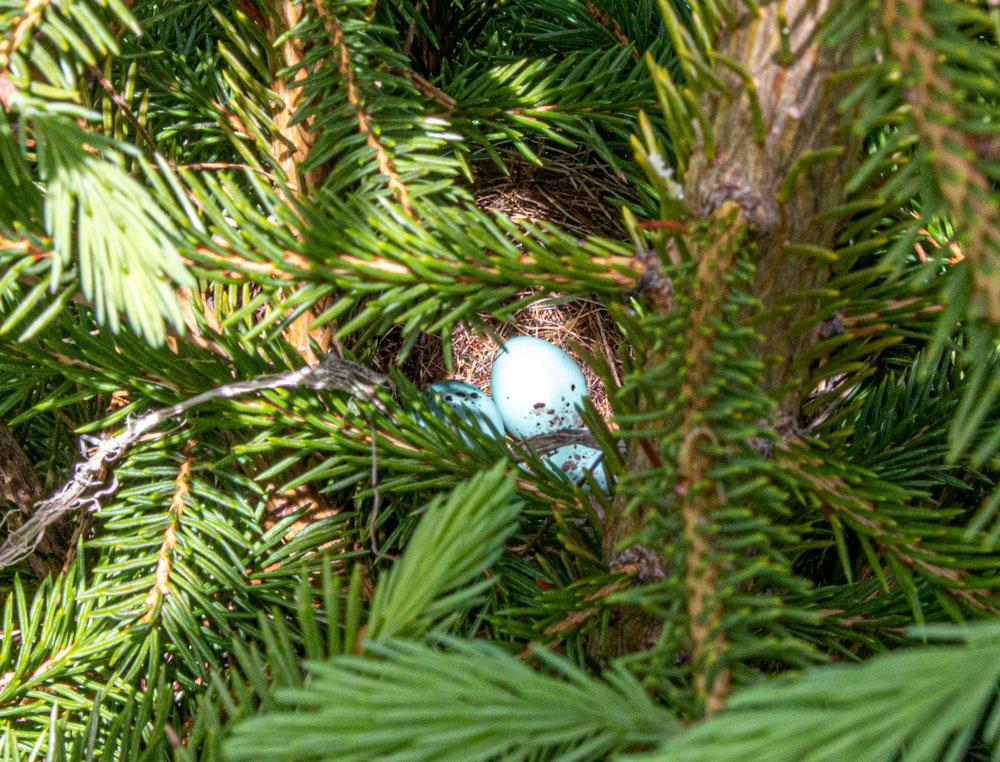
Chipping sparrow eggs in a red spruce Picea rubens.
Chipping Sparrow Migration
Chipping sparrows are considered a resident to short-distance migrants. In the southern United States and the mountains of Central America, these birds will typically remain year-round. Birds that breed to the north of Arizona, Arkansas, and Tennessee and all the way to the Arctic, will fly south to Baja, California, Mexico, and Florida.

Thank you for reading and I hope you enjoyed learning about the chipping sparrow. I will look forward to the next coming weeks when the adults bring their young to the feeders. This is always a delightful experience to watch.
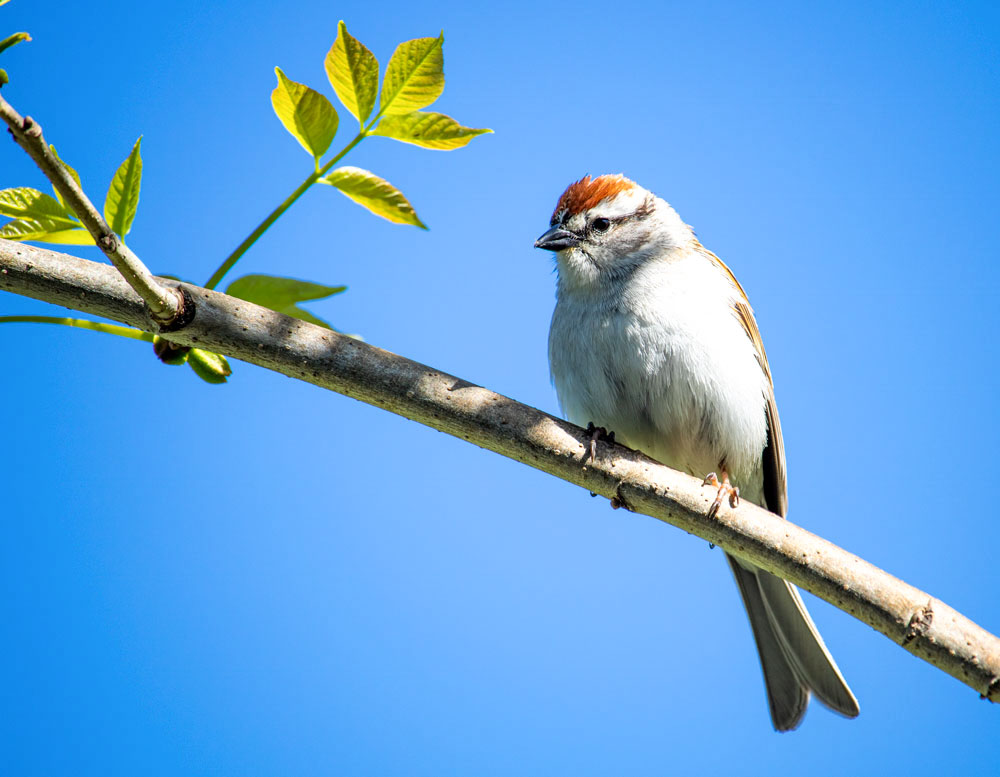
Resources used for this post:
allaboutbirds.org & audubon.org
Leave a Reply